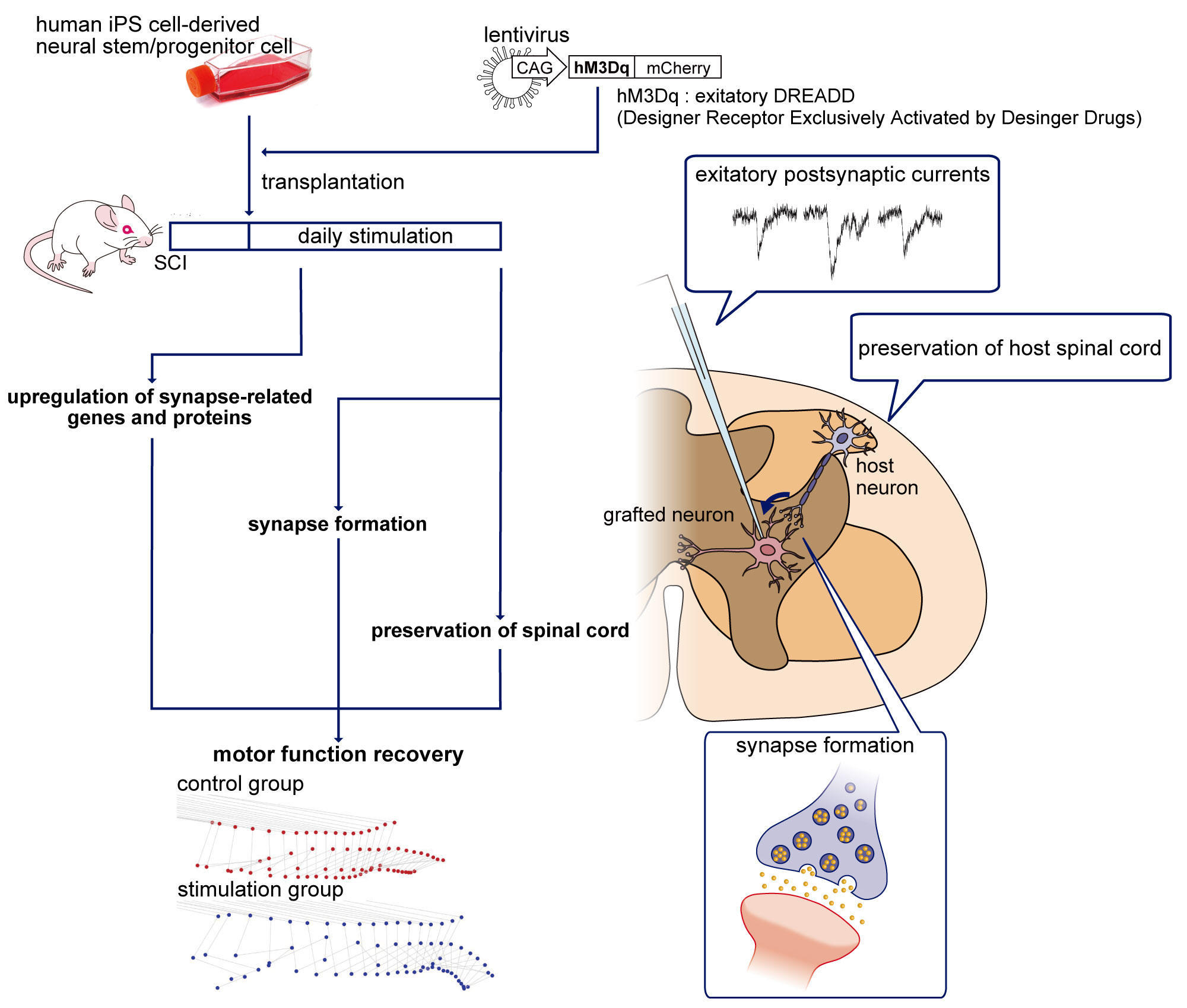Long-term selective stimulation of transplanted neural stem/progenitor cells for spinal cord injury improves locomotor function

Title: Long-term selective stimulation of transplanted neural stem/progenitor cells for spinal cord injury improves locomotor function
Authors: Momotaro Kawai, Kent Imaizumi, Mitsuru Ishikawa, Shinsuke Shibata, Munehisa Shinozaki, Takahiro Shibata, Shogo Hashimoto, Takahiro Kitagawa, Kentaro Ago, Keita Kajikawa, Reo Shibata, Yasuhiro Kamata, Junichi Ushiba, Keisuke Koga, Hidemasa Furue, Morio Matsumoto, Masaya Nakamura, Narihito Nagoshi, Hideyuki Okano
Journal: Cell Reports, Vol 37, Issue 8, Number 110019 (2021)
DOI: 10.1016/j.celrep.2021.110019
Abstract:
In cell transplantation therapy for spinal cord injury (SCI), grafted human induced pluripotent stem cell-derived neural stem/progenitor cells (hiPSC-NS/PCs) mainly differentiate into neurons, forming synapses in a process similar to neurodevelopment. In the developing nervous system, the activity of immature neurons has an important role in constructing and maintaining new synapses. Thus, we investigate how enhancing the activity of transplanted hiPSC-NS/PCs affects both the transplanted cells themselves and the host tissue. We find that chemogenetic stimulation of hiPSC-derived neural cells enhances cell activity and neuron-to-neuron interactions in vitro. In a rodent model of SCI, consecutive and selective chemogenetic stimulation of transplanted hiPSC-NS/PCs also enhances the expression of synapse-related genes and proteins in surrounding host tissues and prevents atrophy of the injured spinal cord, thereby improving locomotor function. These findings provide a strategy for enhancing activity within the graft to improve the efficacy of cell transplantation therapy for SCI.
Related Articles:
- Modulation by DREADD reveals the therapeutic effect of human iPSC-derived neuronal activity on functional recovery after spinal cord injury. Stem Cell Reports, Vol. 17, Issue. 1, pp. 127-142 (2021). DOI: 10.1016/j.stemcr.2021.12.005
- LOTUS overexpression via ex vivo gene transduction further promotes recovery of motor function following human iPSC-NS/PC transplantation for contusive spinal cord injury. Stem Cell Reports, Vol. 16, Issue. 11, pp. 2703-2717 (2021). DOI: 10.1016/j.stemcr.2021.09.006
- Treadmill training based on the overload principle promotes locomotor recovery in a mouse model of chronic spinal cord injury. Experimental Neurology, Vol. 345, 113834 (2021). DOI: 10.1016/j.expneurol.2021.113834





